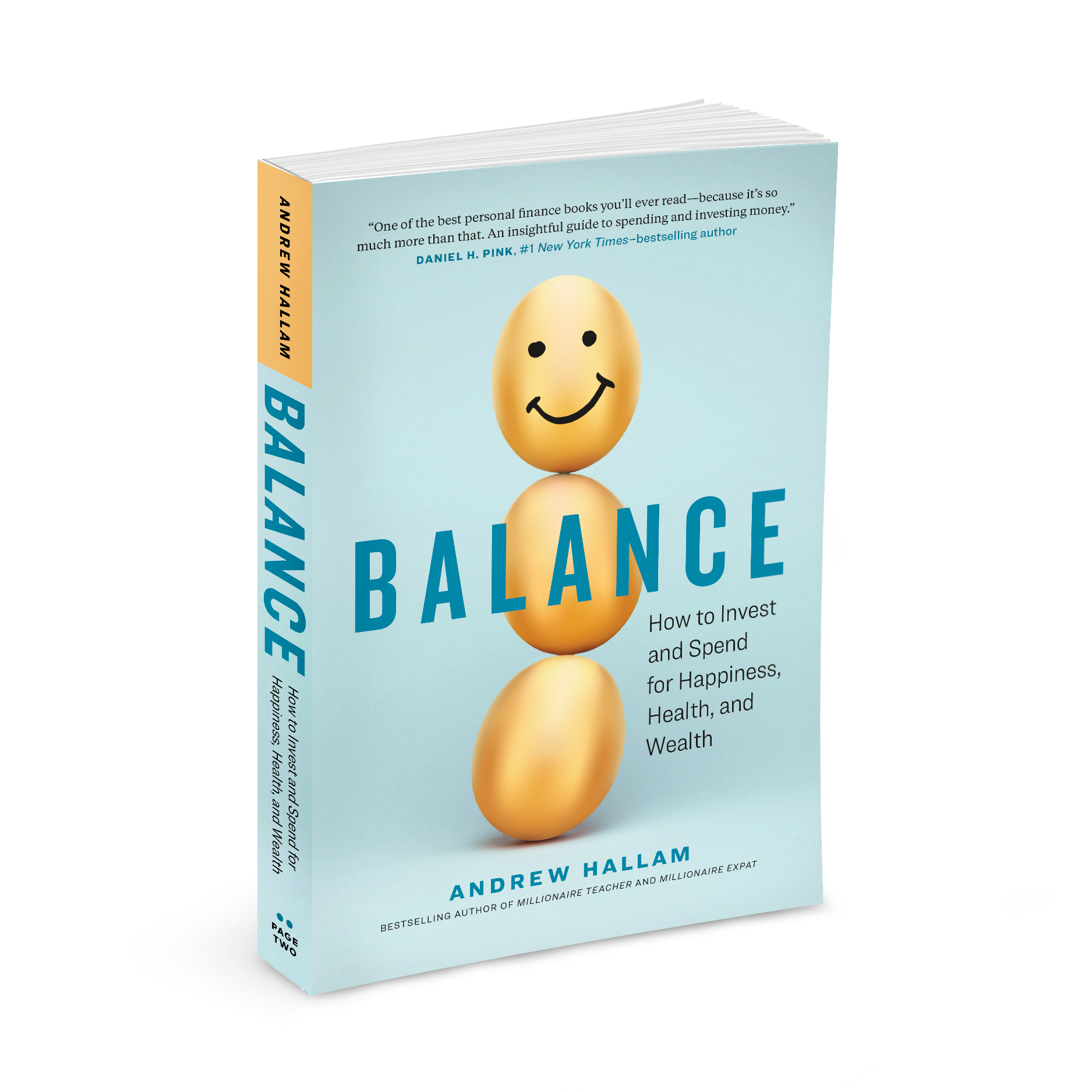
Guest blog post
My decision to return back to international teaching was motivated by my unrepentant wanderlust. But it was also driven by my desire to take stronger measures toward saving for retirement.
I arrived at my new school in August of 2014. The retirement program offered was through Raymond James. Teachers contribute 11.2% of their base salary (in $USD) and the school matches that with an additional 18.2%.
I spoke to Tim Hoffman, the Raymond James rep, during his first visit to the school in September. He and I had been in contact via email at least six months before I arrived. I had been pressing him hard to see what Raymond James could offer that could match a balanced portfolio of index funds. There was some ducking and weaving each time — “let’s talk more about that when you get here” — and some long radio silences. I did not hold high hopes for being able to avoid costly funds.
When I got here, though, he said (after a half-hearted pitch for MFS Meridian Global Equity Fund, Franklin U.S. Opportunities Fund, Templeton Global Balanced Fund, etc., all with expense ratios of 2%) that the money was my own after all, and that I could, in fact, invest it elsewhere if I wanted. I would just have to pay Raymond James a $40 USD wire transfer fee each time. Overjoyed, I double-checked with the business office. They said that it was my choice to make.
And the rest, as they say, is history. I met with Tim to set up a transfer to my TD Waterhouse account. The previous summer, I had set up a TD Waterhouse non resident account—which Canadians must open in person.
I called TD in Toronto to find out what will happen to the money once it arrives. They said there would be a $17.50 CDN incoming transfer fee. Additionally, they said that I would have to actually call them to allocate the money to the different funds in my portfolio, and that the charge for this phone transaction would be $43.00 Canadian. When I expressed dismay at this, they said that this charge would likely be reduced to $9.99 because of my non-resident status.
The funds have since arrived in my TD Waterhouse account. This way of doing things is not without its pitfalls. To limit costs, I plan to invest 4 times a year. A $40 USD wire fee charged by Raymond James costs $160 over the year. TD’s incoming wiring cost will total $70. Making 4 purchases per year will cost about $40 total.
All told, I will pay about $270 a year to make this happen. So why bother?
Over a 15 year duration, it would likely earn the equivalent of a $168,054 bonus. Over 20 years, it would save me $380,450. A young teacher, with a full career ahead, would save about $1.41 million more over 30 years, by using such a method.
Assume that I invest $40,000 a year, including my employee match. With Raymond James’ international fund selections, I would pay about 2% per year in hidden, annual expense ratio charges. With a portfolio of index funds, I would pay about 0.1% per year. Note how I could pay an extra $270 per year, from international transfer fees, but still come out ahead with a lower cost portfolio of index funds.
|
|
Raymond James Funds |
TD Waterhouse |
|
Amount Invested Each year |
$40,000 |
$40,000 |
|
Minus International Transfer Fees/Brokerage Costs |
$0 |
$270 |
|
Amount That Gets Invested Annually |
$40,000 |
$39,730 |
|
Assumed Annual Return Before Fees |
8% |
8% |
|
Annual Fees On Funds |
2% |
0.1% |
|
Annual Return After Fees |
6% |
7.9% |
|
Portfolio Value After 15 Years |
$986,901 |
$1,154,955 |
|
Portfolio Value After 20 Years |
$1,559,709 |
$1,940,159 |
|
Portfolio Value After 30 Years |
$3,352,069 |
$4,768,113 |
Editor’s addition
What funds should the writer buy?
The writer just needs to buy 3 investment funds. By doing so, she would have exposure to the Canadian stock and bond markets (her home markets) as well as global exposure.
For global stocks, she could buy the iShares Cores MSCI All Country ex Canada ETF. It trades on the Toronto stock exchange, under the symbol, XAW. Its hidden costs are just 0.2 percent per year, yet it gives her exposure to U.S. stocks, developed world international stocks and emerging market stocks.
For Canadian stock market exposure, she could buy the ultra low cost Vanguard FTSE Canada All Cap ETF. Its hidden expenses are a paltry 0.05 per cent per year.
For Canadian bond market exposure, she could buy Vanguard’s Canadian Short Term Bond Market ETF. Don’t let the name fool you. It’s comprised of short-term bonds that expire in less than 5 years. When one bond expires, the fund buys another bond.
This woman is in her mid 40s. Here’s how her portfolio could look:
|
Allocation Of His Total Portfolio |
ETF |
Expense ratio |
|
40% |
0.10% |
|
|
30% |
0.05% |
|
|
30% |
0.20% |
Sources: Vanguard Canada; iShares Canada
It’s also worth noting that ETF fund costs continue to drop. Index fund investors are smart. As such, the competition to keep dropping costs is fierce.
If you are reading this post, one year after its publication date, odds are that the costs of these funds would have dropped further.





